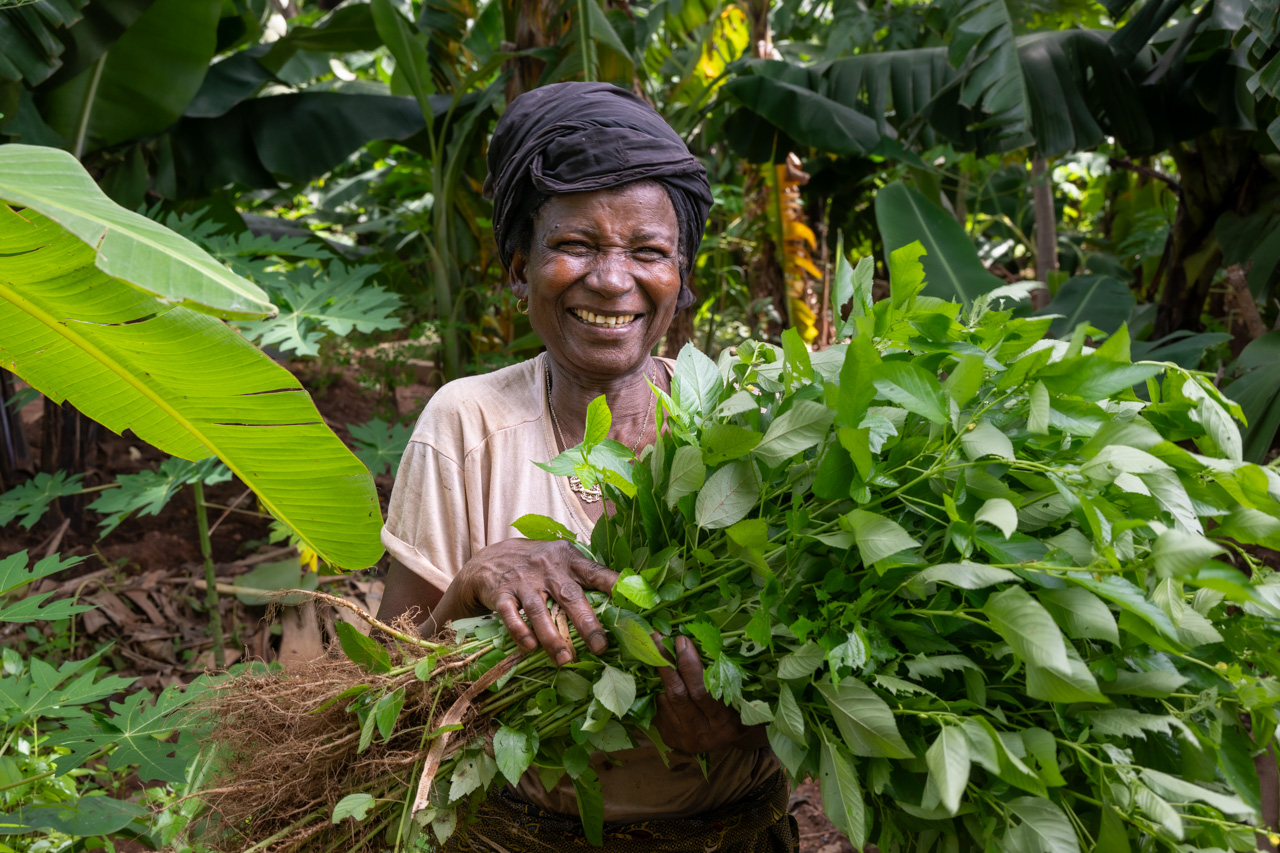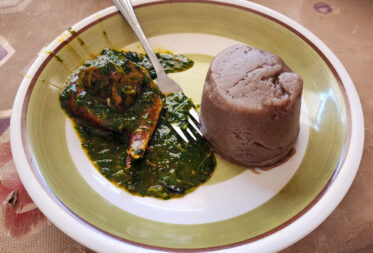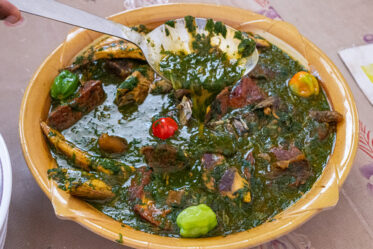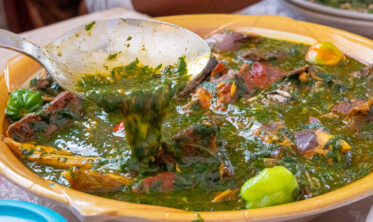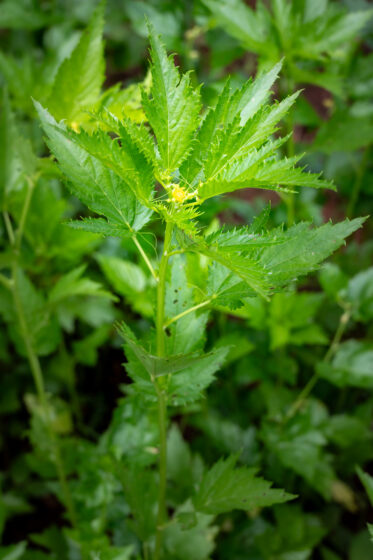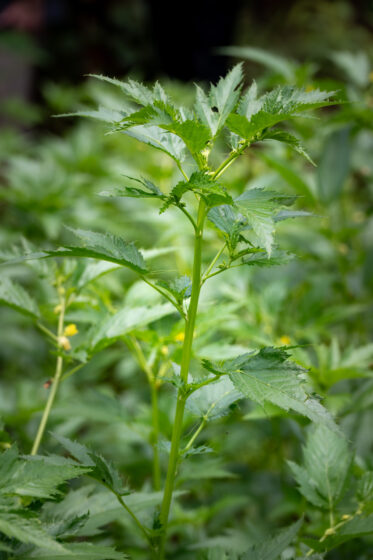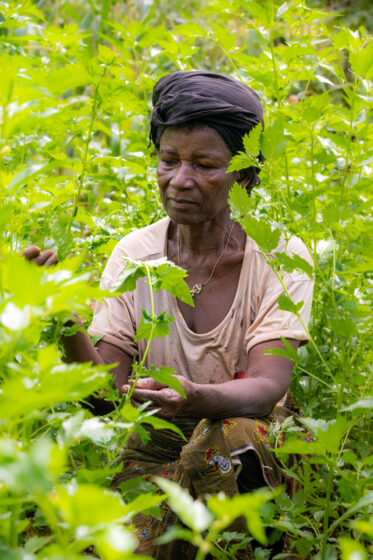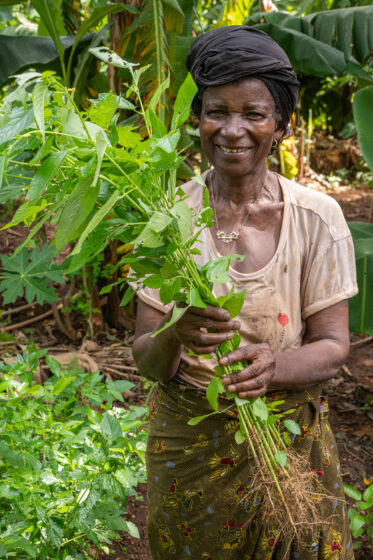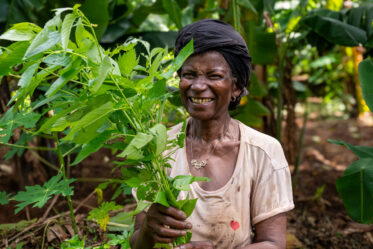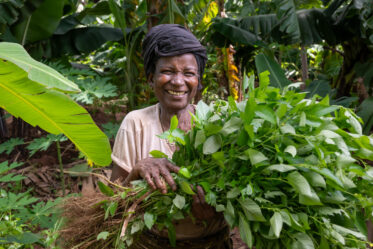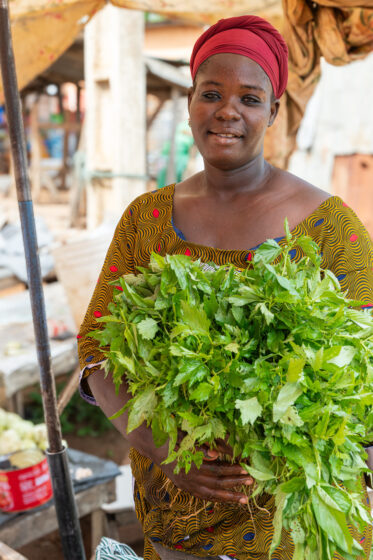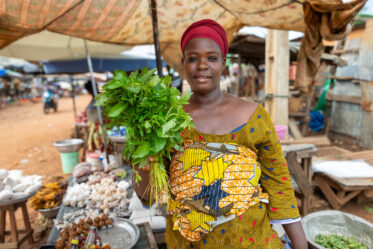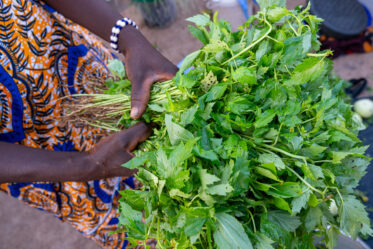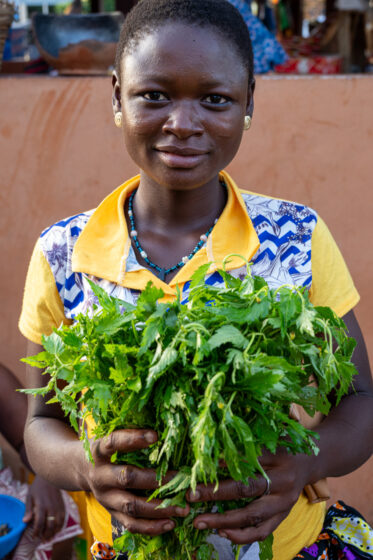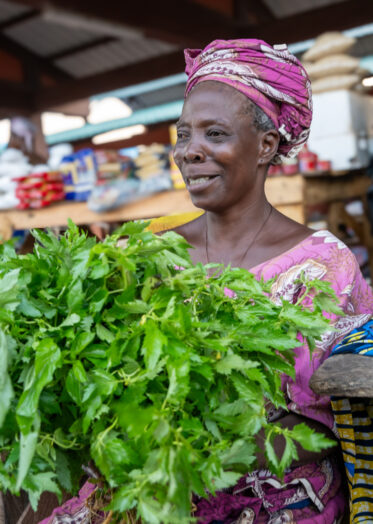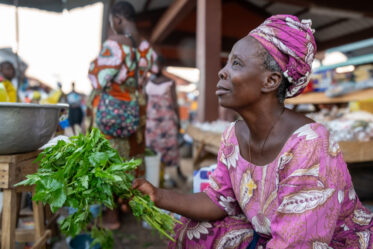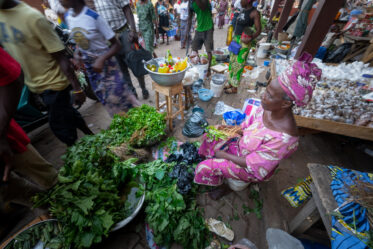I never thought I’d enjoy eating green mucilaginous slime. But I did.
Jute mallow is a favorite with the Beninese who call the crop crincrin. It’s an annual leafy crop grown in many places around the world. Its leaves are rich in pro-vitamin A, iron, calcium, and vitamins B and C. Those are important in a country where the staple foods are energy-dense but micronutrient-poor.
It grows pretty much everywhere in Benin. In small home gardens or market gardens. It’s not fussy about inputs but insects like it as well. Farmers don’t mind sharing some of their crincrin with the insects. If consumers see a few insect bites in the crincrin they don’t fuss as they then assume the leaves are free of chemicals.
You’ll see it in most markets. Its probably one of the most traded leafy vegetables in Benin. The more mucilaginous it is, the better for consumers.
Our hosts for this trip, Dr Sam and Dr Malika, are nutritionists with the Alliance of Bioversity-CIAT working with the Crop Trust’s BOLDER project to help identify how the Beninese can remove bottlenecks in the value chain so that jute mallow gets in the mouths of more Beninese.
When I saw the green slime served to our table I wasn’t sure I wanted it in my mouth. My Beninese companions dove right into the ninnouwi (jute mallow soup) and mixed it in with their telibo (dried yam dough). I couldn’t master the technique of using the telibo to scoop up the slime but I got enough of it in my mouth to recognise that jute mallow is not only super nutritious but also mighty tasty.

